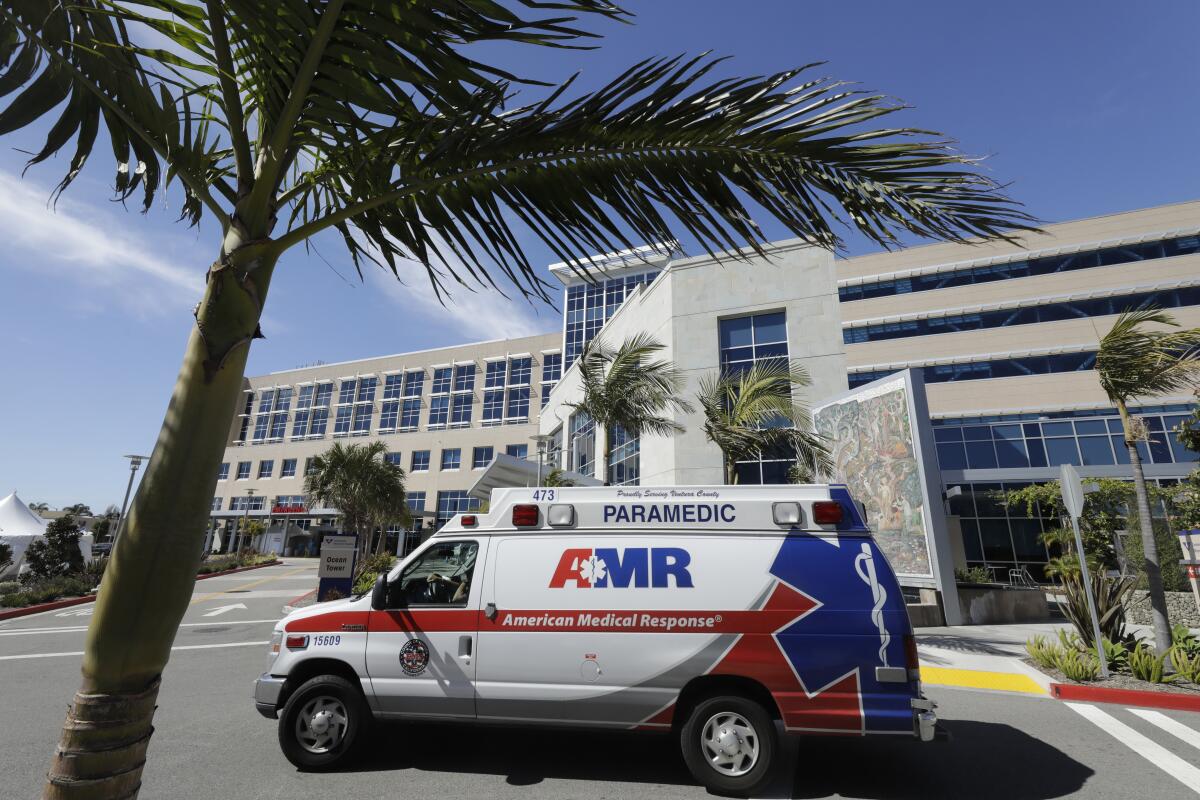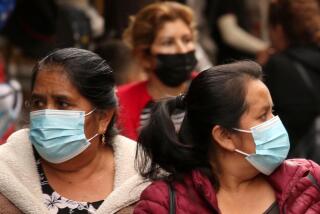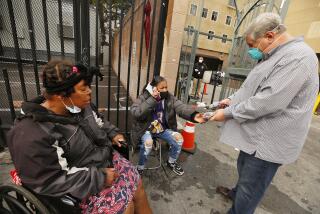COVID-19 has surged in Ventura County. Now, the ICUs and ERs are full

A coronavirus hospital surge plan is in place in Ventura County after emergency rooms and intensive care units filled up.
During a Wednesday media briefing, Ventura County Executive Officer Michael Powers said that when he asked hospital staffers whether their facilities were filling up, they said they were already full.
“That just says that even in a county like Ventura County, where we’ve been doing so well with keeping our numbers low, some of the lowest numbers in the state, even here this can happen. We could see this community spread and we could see a rise in hospital cases. I think this is a good wake-up call for us,” Powers said.
There are 79 people hospitalized for acute COVID-19 care in the county, Ventura County Public Health Director Rigoberto Vargas said. In early June, that number sat in the mid-20s, he said. Thirty-one people are in intensive care units.
“We’re extremely full right now,” said John Fankhauser, chief executive of Ventura County Medical Center and Santa Paula Hospital. “We have opened up our surge space.... We are seeing patients in that surge space.”
The hospitals are considering restricting non-urgent surgeries to create more space for COVID-19 patients, he added.
“It’s important that you feel comfortable coming to the hospital, but we need our community to partner with us now,” Fankhauser said. “There is a limit to how much we can surge. We can’t continue on the path we are on right now with regard to social gatherings; with regard to close quarters and no masks indoors; with regard to the ability to wash your hands. We have to take those things seriously. We know how to control this disease.
Dr. Tara Paterson, director of the medical center’s intensive care unit, said the surge plan took five months to prepare. Now, with the ER and ICU full, that plan is in use, she said.
“These COVID-positive patients that we are seeing in the ICU are extremely sick. Those patients who require mechanical ventilation often have prolonged ICU stays. They are very labor intensive. Some of them do not survive their hospital stay. So please, please wear a mask, social-distance, do your part, because this could become a family member of yours. It could be your grandmother, your grandfather, your sister, your wife,” Paterson said.
County Supervisor Linda Parks agreed that residents have the power to address the overflow.
“It’s up to you to stop our hospitals from ending up at capacity or over capacity,” she said
Powers echoed the call to action too.
“Until there’s a vaccine, the main thing we need is to have the testing capacity, the tracing and the support for voluntary quarantining,” he said.
Powers said the county is using only one-third of its tracing capacity and will continue to track community spread.
Vargas said the county received 125 new positive COVID-19 tests Wednesday, bringing the total to 3,983 positive tests. He also reported a new death, bringing the county’s death toll to 51.
“Sure, our fatality rate has been less than 1%. But it’s 51 families that have been directly impacted by COVID in Ventura County,” he said.
Amid increasing cases and deaths, the county has also increased testing. Over the last three weeks, the average of COVID-19 tests administered weekly has jumped from 5,000 to 12,000, said Barry Zimmerman, chief deputy director of the Ventura County Health Care Agency. About 76,000 people have been tested, he said.
Among those testing positive, 62% have been younger than 44. Of those, 40% are younger than 24. Over a quarter of positive tests have come from asymptomatic individuals, Parks said.
More to Read
Sign up for Essential California
The most important California stories and recommendations in your inbox every morning.
You may occasionally receive promotional content from the Los Angeles Times.











